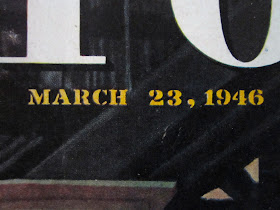Lulajże, Jezuniu, “Lullaby, Little Jesus” is a traditional Polish Christmas carol dating from the nineteenth century, or who knows, perhaps earlier. Here is a lyric in original and in translation; very homey, yes?
Lulajże Jezuniu, moja Perełko,
Lulaj ulubione me Pieścidełko.
Lulajże Jezuniu, lulaj, że lulaj
A ty go matulu w płaczu utulaj
Hush little Jesus, my little pearl,
Hush my favourite little delight.
Hush little Jesus, hush, hush
But you lovely mother, solace him in tears
Here it is sung by Stefan Witas in a 1932 recording for Columbia. It is worth the trouble to follow the link and take a listen, as it is a great recording of a nice tenor voice, plus all the scratchy vinyl versimilitude.
And here is another, recent recording, perhaps a little syrupy, but with the advantage of clarity, sung slowly enough that it is easy to listen and read the lyric at the same time.
Fryderyk Chopin incorporated this carol into his first scherzo, his Scherzo No.1 in B minor, Op. 20. Why would he do that? And for that matter, why would he set a musical joke in a minor key?
In 1830, Chopin was in Vienna. The Polish military cadets in Warsaw launched an uprising against the Russian Tsar. This November Uprising of 1830 involved Poles, Ukrainians, Lithuanians, and Belarus, and went on for 8 or 9 months until its ultimate defeat. This was their battle flag:
IN THE NAME OF GOD
FOR AND
OUR YOUR
OUR YOUR
FREEDOM
This is translated as For our freedom and yours, and has been repeated in subsequent wars, and is repeated now.
Chopin’s friends persuaded him to remain in Vienna while this insurrection raged in his homeland. So his compatriots were fighting for independence far away; he had TB anyway; he could not fight. I think that, obsessed with the knowledge of the fight and feeling the agony of his homeland, he must have considered a musical joke perfectly appropriate. It was a sick joke that Fate was playing on the Poles and their allies. The music speaks of frenzy.
The structure of the thing is all there to read about, but the stunner is what happens in the very center of it. At 3’20” in this recording, the waking nightmare pauses, and reverie takes over. We hear the melody of Lulajże, Jezuniu. We hear just the melody, as if we were being rocked in maternal arms, or as if we were in meditation before the Manger, or as if we were at home at Christmas.
But then we are jerked awake, startled back to the present and to war.
There are times when, after reading the news for an hour, I deliberately send my thoughts back to the security and the wholeness of my own childhood – for I was lucky to have such. My father would look at me and say Pieścidełko – little dear one.
I see the twinkling tree and all the glowing lights; I sense the dark snowy winds beyond the curtains; I hear the music; I sense the fragrances from the kitchen; I notice the rustlings of dear ones moving around the house. Yes, I go back there in memory on purpose, but then startle awake, jerk back to the present, where there is knowledge of protracted, seemingly distant, yet decisive battle.







































